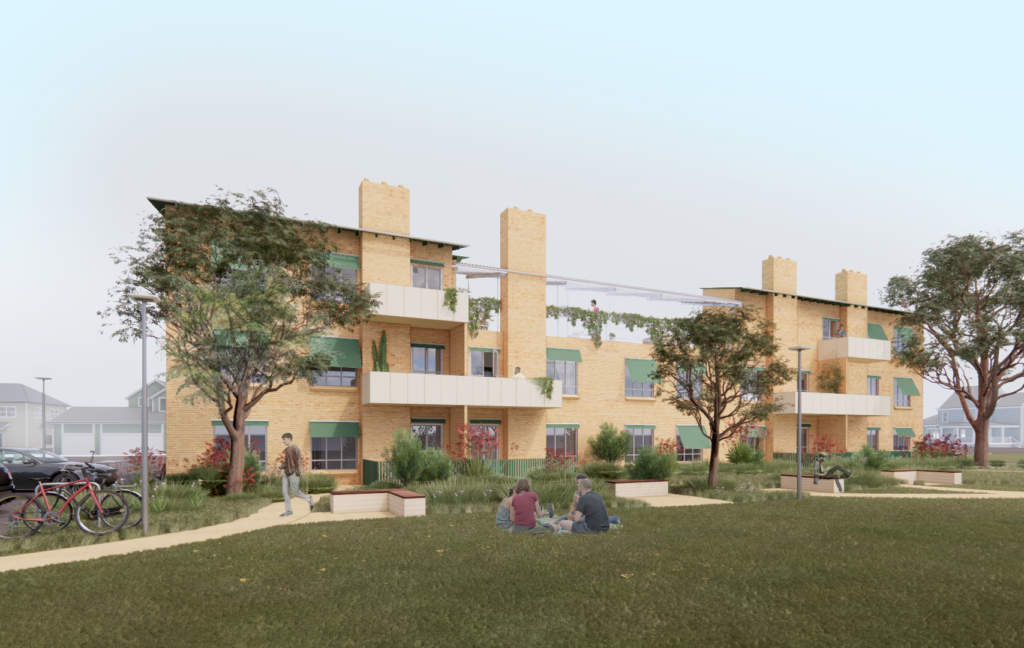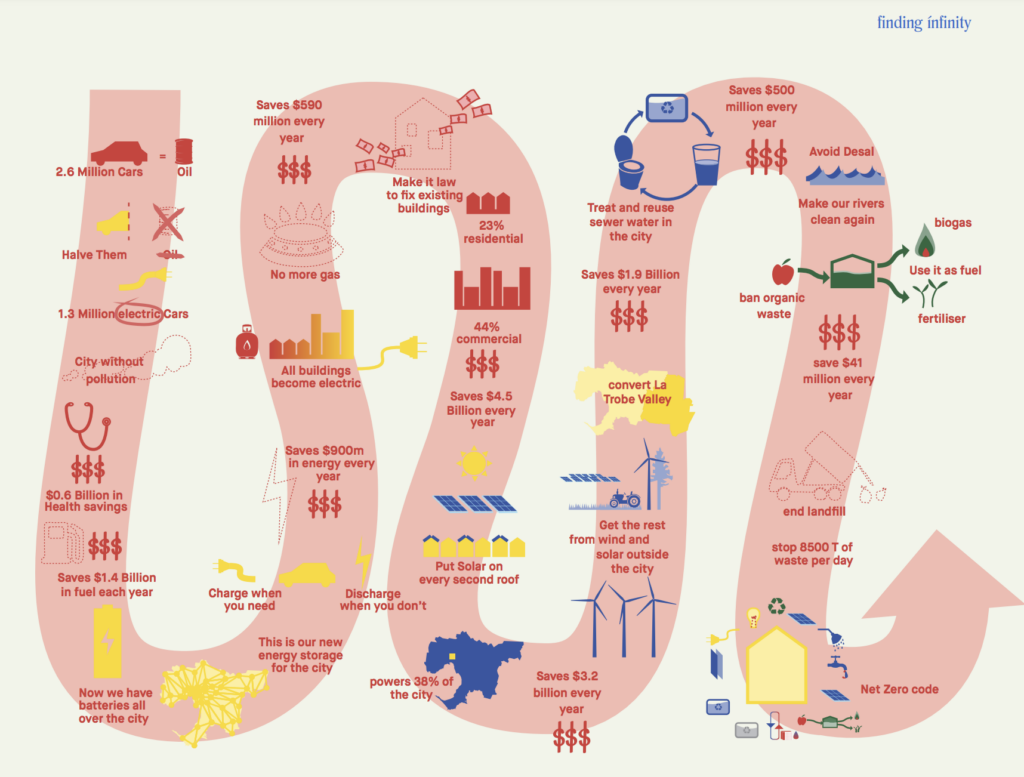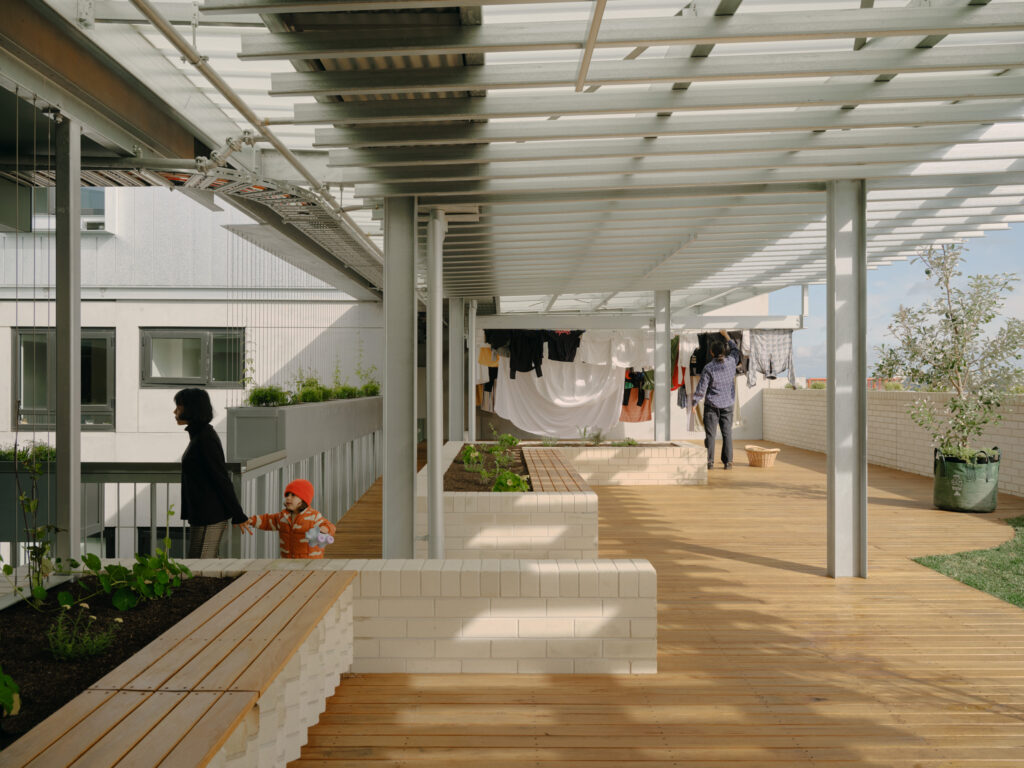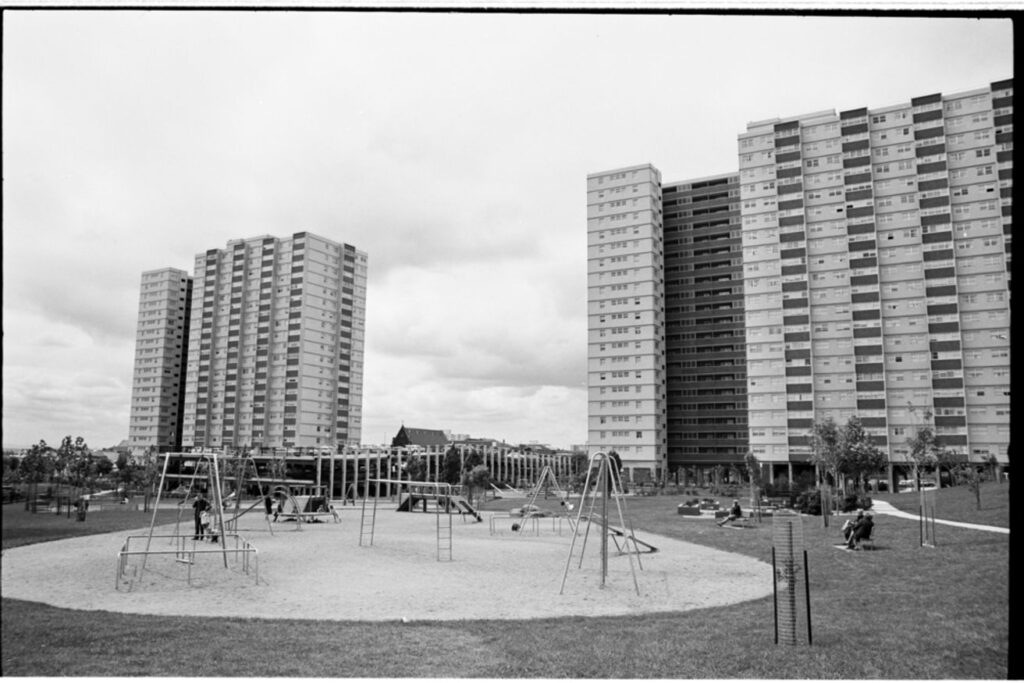As part of the global IHRB project “Building for Today and the Future“, local researchers in 8 cities are studying how climate action in the built environment impacts human rights, and identifying examples of innovation that contribute to combined social and environmental outcomes.
Here are the examples of innovation from the research team at Melbourne University:Joanna Tidy, Lucy Lyon, Judy Bush, Dan Hill and Natalie Galea, together with IHRB’s Alejandra Rivera.
Visit the IHRB site for the Melbourne city summary with the research findings, and the Building Transformation StoryMap for innovation in multiple countries.
Office Architects has developed the Retain / Repair / Reinvest evaluation strategy to guide feasibility strategies on the potential refurbishing of existing public housing.
Central to this model is ensuring that the basic human right of access to adequate housing in retained through the process of refurbishment, and prioritizes the voice of the community in the engagement process.
The overall process entails: retaining existing communities by not relocating residents throughout the redevelopment process; repairing the existing building structures to prolong building life and reduce carbon emissions; and reinvesting the savings of the redevelopment back into the buildings to improve comfort, improve energy efficiency and upgrade the conditions of the site overall.

Victoria’s social procurement approach
Homes Victoria manages the State’s social housing portfolio, as a part of the Department of Families, Fairness and Housing. It has environmental design standards, and, drawing on the Victorian Government’s social procurement framework, has four guiding social procurement objectives. These are to provide:
- opportunities for Victorian Aboriginal people
- opportunities for Victorians with disability
- opportunities for Victorian priority jobseekers (social housing renters, people on the Victorian Housing Register, asylum seekers and refugees), and
- women’s equality and safety.
Visit Homes Victoria’s website to find out more about how these objectives are being put into practice.
A New Normal is a plan developed by Finding Infinity in collaboration with architectural firms, to transform Greater Melbourne “from a consumer [of energy] to a producer by 2030”. The plan (full report here) identifies “10 key profitable initiatives” in these areas: Electrify Transport; Energy Storage; Electrify Architecture; Efficient Architecture; Solar Architecture; Solar and Wind Grid Scale; Water Unlimited; Organic Waste to Energy; End Landfill; and New Architecture.
Specific proposed actions include: mandating the retrofit of all existing buildings to reduce energy and water consumption; and using energy storage systems to power homes through the electrification of the transport system.

The Nightingale Model: “Homes built for people, not profit”
The Nightingale housing delivery approach is founded on the principles of affordability, fostering social connection and holistic sustainability. The rental model pre-allocates 20% of available apartments to community housing providers for local residents, to foster a greater sense of belonging and stewardship within the community. The design of the buildings sees the mandatory inclusion of essential sustainable components such as double glazing and renewable energy sources to keep running costs low for residents. The developments also de-prioritise car use through locating buildings within high amenity, accessible areas with good connections to active and public transport.

Housing Commission of Victoria (HCV) – Historic example
Following an investigation into the housing conditions of Melbourne’s inner-city ‘slums’ in the 1930s the Housing Commission of Victoria was established to develop new housing options that could improve the living conditions of low-income families.
Using limited post-war funding from the Commonwealth Government, the HCV pioneered mass-produced prefabricated concrete panels that were made off-site and assembled into housing towers throughout Melbourne, resulting in an overall 10% increase to housing stock during the 1940s. This affordable construction and financing opportunity allowed for greater populations of Melbourne’s poor to be housed in conditions that offered greater variety of bedroom typologies and greater access to green space at the ground plain.

